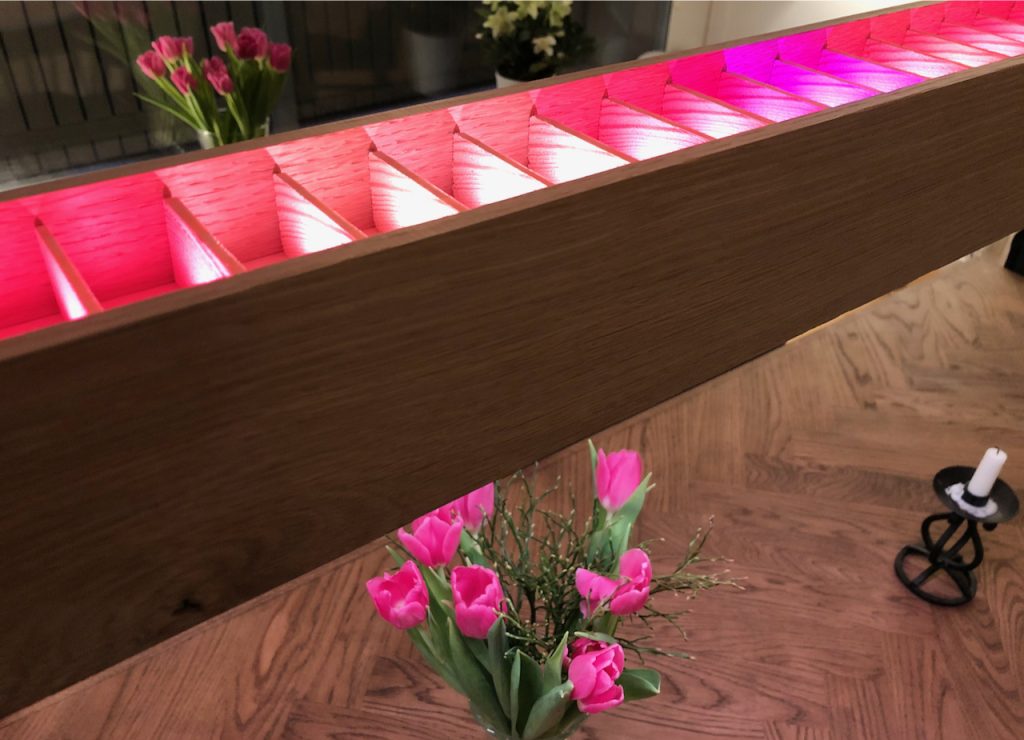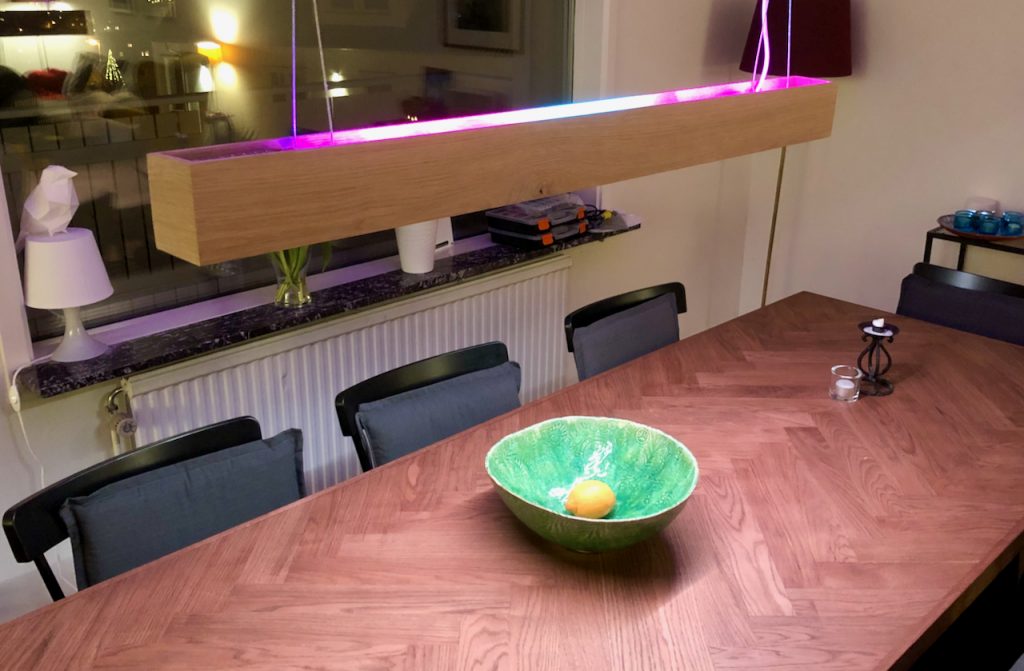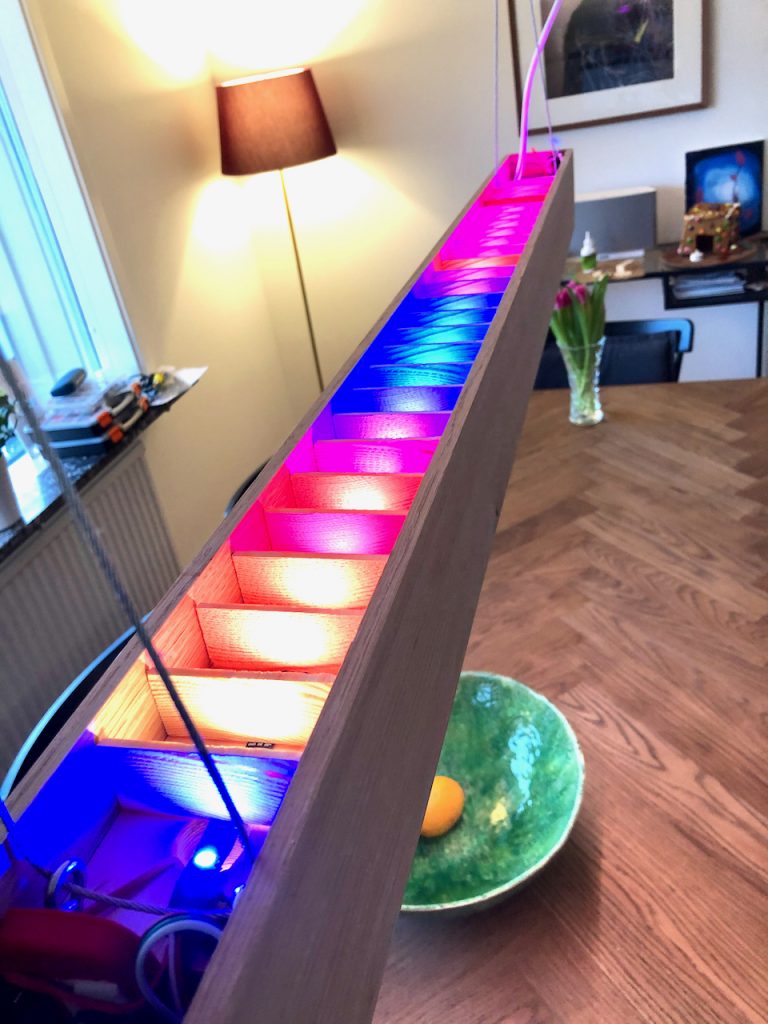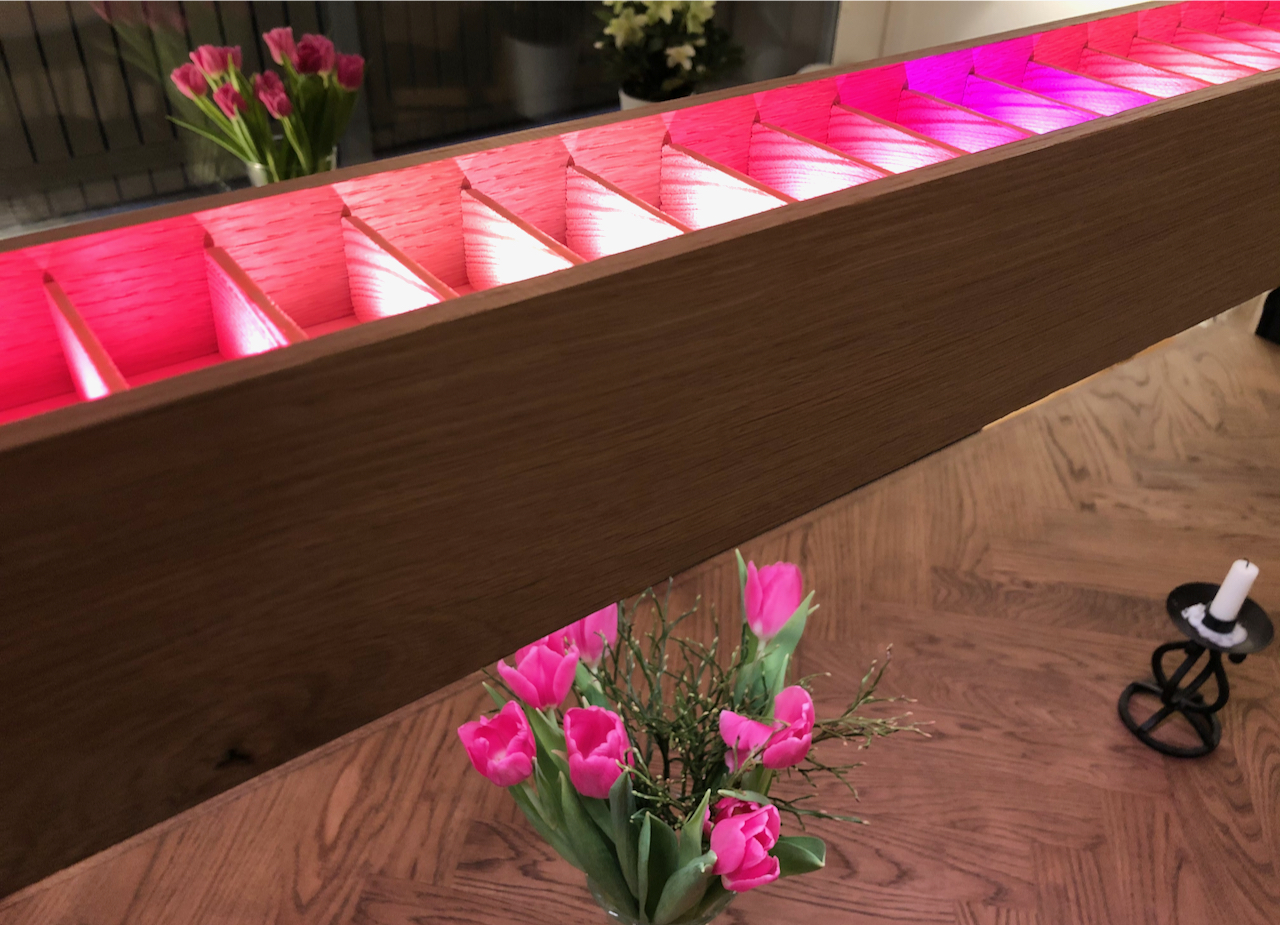This is a prototype for a dining table pendant lamp. A camera monitors what’s underneath the lamp and tries to mimic the colors it sees with the LED:s on the top of the lamp. This creates a somewhat matching ambient light in the room.
It is made from oak wood and it uses a Python script on a Raspberry PI Zero W for the image analysis. The drawback is that the boot time is close to 20 seconds. Next version will use the smaller ESP32 module which hopefully will have a faster startup time.
Color calibration for camera images in different lighting conditions and LED color was harder than I thought.
Bill of materials
- Oak wood (200 cm x2 and 10 cm x 2)
- Individually controllable LED strips 2 x 1 m
- 5A 220V to 5V DC power supply.
- Raspberry Pi Zero W.
- RPI-compatible camera module.

The brown table turns to red while the pink flowers seem to work OK.

Not visible properly because of bad photo but tries to mimic the green and yellow from the bowl and lemon.

Not color calibrated. Green turns to blue in the LEDs.
